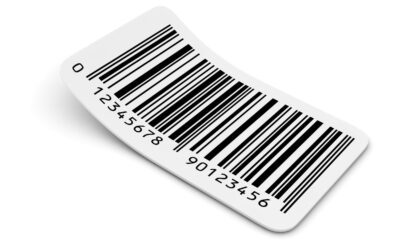Then, asset tags work by linking your assets to corresponding digital profiles. In other words, they link your physical assets with digital twins of them, meaning that every time you scan an asset’s tag, the corresponding profile is retrieved.
Setting Up Asset Tags
There should be some speed improvements and benefits with your asset tracking app. For example, with itemit, you can bulk add tags to multiple assets or you can create an asset by scanning an unassigned asset tag.
But what is the benefit of using asset tags and are they essential?
Automated Location Tracking
When this happens, the user who scanned the tag and the time of the scan is logged also, giving you the most visibility possible over your assets’ audit trails.
This is a system you don’t get without using asset tags. You can manually update an asset’s location without using tags, but then to create a full audit trail, you will also need to add the time of the scan and who scanned it. Asset tags simply do this process for you with every scan.
Asset tags also allow you to update asset data, such as manually added locations, in bulk. This means that if twenty assets are added to storage, you need only scan the tags in bulk to reflect this.
Speed Up Asset Data Management
If you discover a lost, tagged asset, all you need to do is scan that asset’s tag to retrieve relevant and up-to-date data on it. This means that instead of a lost laptop passing through several hands before it gets back to where it belongs, who it belongs to is visible within the asset’s profile.
This also means that if you need to report an issue or fault with an asset, you don’t need to search for that asset in a list. Scan the tag, report the issue, it’s that simple!
Asset tags, therefore, give you many accountability benefits, increase your visibility and save you time and money in the process.
itemit’s Asset Tracking Software
itemit lets you track and manage any asset and save time and money in the process. You can customise how you track your assets to take your asset management operations as far as possible.
In this sense, you can get the benefits of asset tagging on the assets that require tags, and have the freedom of not being tied down to tags for assets that don’t necessarily need them, such as vehicles.
itemit lets you mix and match asset tagging technology, too, meaning you can track your assets with RFID asset tracking operations, GPS trackers and QR codes and barcodes, all at the same time.
To find out more about how itemit can help you, contact the team at team@itemit.com. You can also fill in the form below to start your 14-day free trial. If you’d like a sample of free tags, let us know!
Asset Tags
Choose a better way to track your assets
Start your free 14-day trial now
Instant access. No credit card details required.
Related articles
Everything You Need to Know About 2D Barcodes
Discover everything about 2D barcodes, including how they work, their benefits, and how they are revolutionizing industries and improving business operations
Complete Guide to Asset Lifecycle Management and Its Benefits
Learn about asset lifecycle management and how it helps businesses optimize asset usage, reduce costs, and improve efficiency throughout the asset’s life.
Benefits of Vendor Managed Inventory for Your Business
Learn how Vendor Managed Inventory (VMI) can streamline your supply chain. Explore the key benefits and how it helps optimize inventory management.




